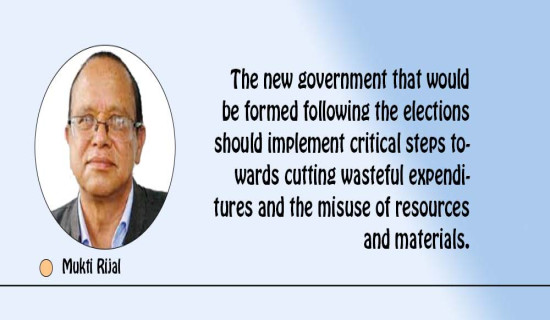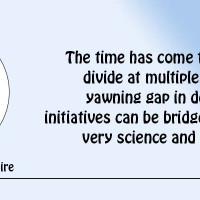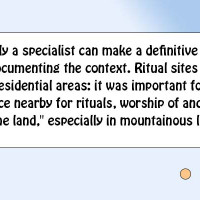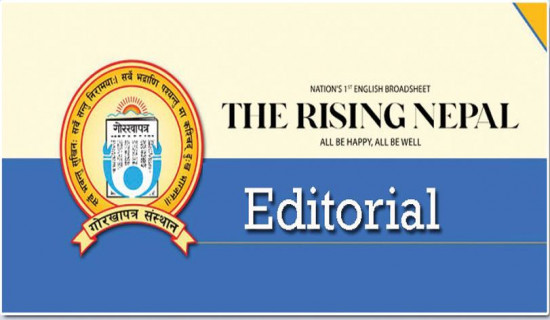- Thursday, 22 January 2026
Effectiveness Of Technical Assistance
The technical assistance (TA) is one of the forms of the international development cooperation, formerly known as foreign aid, in Nepal. TA provides opportunities to act as an extended arm, though temporary, of the system that is under stress due to introduction of change. TA is also a vehicle for transfer of knowledge, skills, expertise, technology and so forth to the beneficiary, i.e. the government. It basically focuses on institutional strengthening at all levels and units within the TA scope.
The Development Cooperation Policy (DCP) 2019 states that the TA will be utilised in a selective way at individual level in terms of skills, knowledge, innovation, entrepreneurship and at organisational level in terms of systems, procedures, technology in enhancing national capacity in alignment with national capacity development plans especially when the technical capacity for project implementation is not available within the government system. However, there has been a debate on the effectiveness of TA in Nepal in achieving the desired results. In the real life situation, this important aspect is often neglected and not given due consideration. This article seeks to shed light on management issues and challenges of TA implementation process crucial for achieving results.
Lengthy process
One major challenge is the lengthy bureaucratic process adopted by the service provider, resulting in delivery delays. In the name of process compliance, unnecessary delays have been introduced only to frustrate the beneficiary. The situation gets worst when the project manager happens to be a novice and unprofessional, who repeatedly complicates the simple process. The project management, then, turns into a mess, causing staff turnover, delayed payments and outputs, conflicts, poor salary management, ever rising grievances and shirking of responsibility. Given the nature and need of TA, the service provider in general and the project manager in particular must possess management ingenuity, innovation and efficiency. Therefore, utmost attention must be paid while selecting the service provider and the project manager.
Vetting the person aspiring for the responsibility of project manager is extremely important as the curriculum vitae of the person, very often, followed by an interview may not truly reflect the required competence. Project manager’s management and human skill are genuinely important to make the TA implementation a success. Periodic evaluation and quality monitoring of the TA management is of paramount importance. These important processes must not only be the reporting requirement but a great source of management improvement. This is especially true when TA is specific to social sector like education and health where there is the possibility of the emergence of new demands, needs and opportunities.
Therefore, a professional service provider with a competent project manager is highly desirable. Even a great and experienced technical team with profound professional track record will not be able to perform well when there is poor project management, posing an increased reputational risk. Sometime there is an anomaly when a project manager is controlled by the service provider directly, not by the team leader. Real life experience unveils that there was communication gap, red tapism, lack of unity of command, groupism, confusion, etc. Thus, the whole team members, including management, must be under the team leader who is personally and collectively accountable.
The appointment of a foreign expert, as a team leader, is a normal practice, which aims at promoting best practices in the project implementation. However s/he knows little on the public sector system. S/he must be teamed up with national experts, including a deputy team leader who commands respect ensuring cooperation, support, and understanding from the government through liaison and networking. Quality check of the work so far being done can also be the expected contribution from the deputy team leader. The person can also be used as an advisor to the government, service provider, team leader, funder/s or the experts. The value to be derived from the combination of national and international experts must not be forgotten to this end.
Constant interaction
A traditional approach - “we suggest, you implement” works little. Constant interaction and consultation with the government and the process, led by the government as the service receiver, must be the modus operandi of TA backed by integration of the emerging needs and demands in TA design. Therefore, a blueprint approach may not work especially in the social sector like education and health. There is a particular reason behind it. The social sector is normally associated with uncertainties and opportunities. So TA should be designed with a flexible approach whereby emerging needs and opportunities are systemically taken care. The government is also advised to create a pool of critical and reform-oriented officials who will closely work with the TA team.
By doing this, the much-desired capacity and competence in terms of transfer of knowledge, skills, expertise, technology, experience and networking will be achieved with the sustenance of the deliverables. Therefore, the modality of TA implementation is greatly important. This optimal model of TA implementation can ensure the involvement of the civil servants while identifying the problems, challenges and opportunities and finding out the solutions by themselves. The external experts from inside and outside the country should act as the facilitators at all stages of the TA implementation.
(The author is a former secretary of Education, Science and technology.
deependrabthapa@gmail.com)















